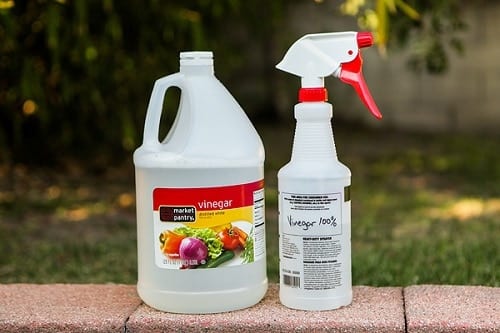
Keep repeating this until the leaves of your plant have recovered and the mildew has disappeared. Mix about 40% milk with 60% water and spray this with a plant sprayer on the mildew-infested leaves of your plant. milk! Milk contains proteins that mildew does not like. The easiest and cheapest way to tackle mildew is one for which you probably already have everything in the house. Therefore, keep the plant separate from other houseplants and wash your hands well after touching it to prevent cross-contamination. Mildew spreads easily through clothing and air currents throughout your home. It is important to remove the brown, infected leaves immediately. If one of your plants is suffering from mildew, your other plants can also become infected. So it is very important to act immediately. With young plants and cuttings it can go wrong faster: they are not as strong yet and will find it harder to survive an attack of mildew. However, your plant may be weakened by the fungus. Your green plant will not die from mildew overnight. Spotted mildew in your houseplant? Then it is important to take action as soon as possible. WaterĪnother tip that helps prevent mildew is to water your plants in the morning instead of in the evening before you go to bed! That way they have all day to drink the water and the soil will be dry again.
Mold on seedlings vinegar install#
Regularly open a window to let fresh air in, install a humidifier or place a few air-purifying plants! A great excuse to get even more plants in the house, right! Then again, make sure you don't place the plants too close together so they get enough air. To prevent the white mold on your plant, it is important to increase the air circulation in your home. Nowadays our (newly built) houses are super well isolated. Like other types of mold, mildew is caused by poor air circulation, among other things. A moist plant is a paradise for mildew! Air circulation A big urban jungle is of course fun, but make sure they get enough air and can dry properly after watering. Besides taking into account the needs of your plant you will also have to take into account the distance between two or more plants. The position of your plant is super important. A little mildew on the leaves will not matter, but do you want to prevent the mildew from spreading to the whole plant and other plants? Then check carefully whether you can apply these tips! Position The fungus thrives in a wet plant, for example after watering.Ī strong and healthy plant can withstand quite a bit. In the summer, when it is warm in the house with high humidity, the mildew can most easily infect the plant. It grows in moist, warm conditions without much air flow. Fortunately, this fungus is easy to prevent. Mildew spreads on and between plants via the spores that are spread by the wind, animals or people. Mildew occurs mainly in warm temperatures, after it has been damp from rain or watering. Yet there are also a few variants where the fungi invade the plant's cells. Most mildew fungi only form visible fungal threads on the outside of your plant's leaves. So always check all sides of the leaves! Mildew can give white and brown spots. Because downy mildew is on the underside of the leaves it is less easy to see. This is also where most of the plant's stomata are located. Downy mildew grows in the leaf, but the visible fungal threads are generally on the underside of the leaf. The difference between powdery and downy mildew is the place they affect. The sooner, the better! Fortunately, a little mold will not kill your plant, but if you wait too long, it can! Downy mildewīesides powdery mildew, there is also downy mildew. As soon as you have spotted the white deposit on the top of the leaves, it is important to start treating immediately. Powdery mildew is often seen on the top and bottom of the leaf. Both varieties are fungi and have the same attack pattern, but they belong to a different family and have a different lifestyle.

Powdery mildew is caused by several different types of powdery mildew fungus and distinguishes between "powdery" and "downy" mildew. Plants with powdery mildew grow slower because the fungus prevents photosynthesis. It draws moisture from the leaves, causing the leaves to dry and eventually die. The fungus is a parasitic white mold that invades the leaves of your plant. Because of its white color, powdery mildew is sometimes called white disease. It is a fungal disease and looks like a white, powdery deposit. You can recognize mildew by the white spots on the leaves of the plant. Mildew is a collective name for a group of fungi that grow on green parts of plants.


 0 kommentar(er)
0 kommentar(er)
